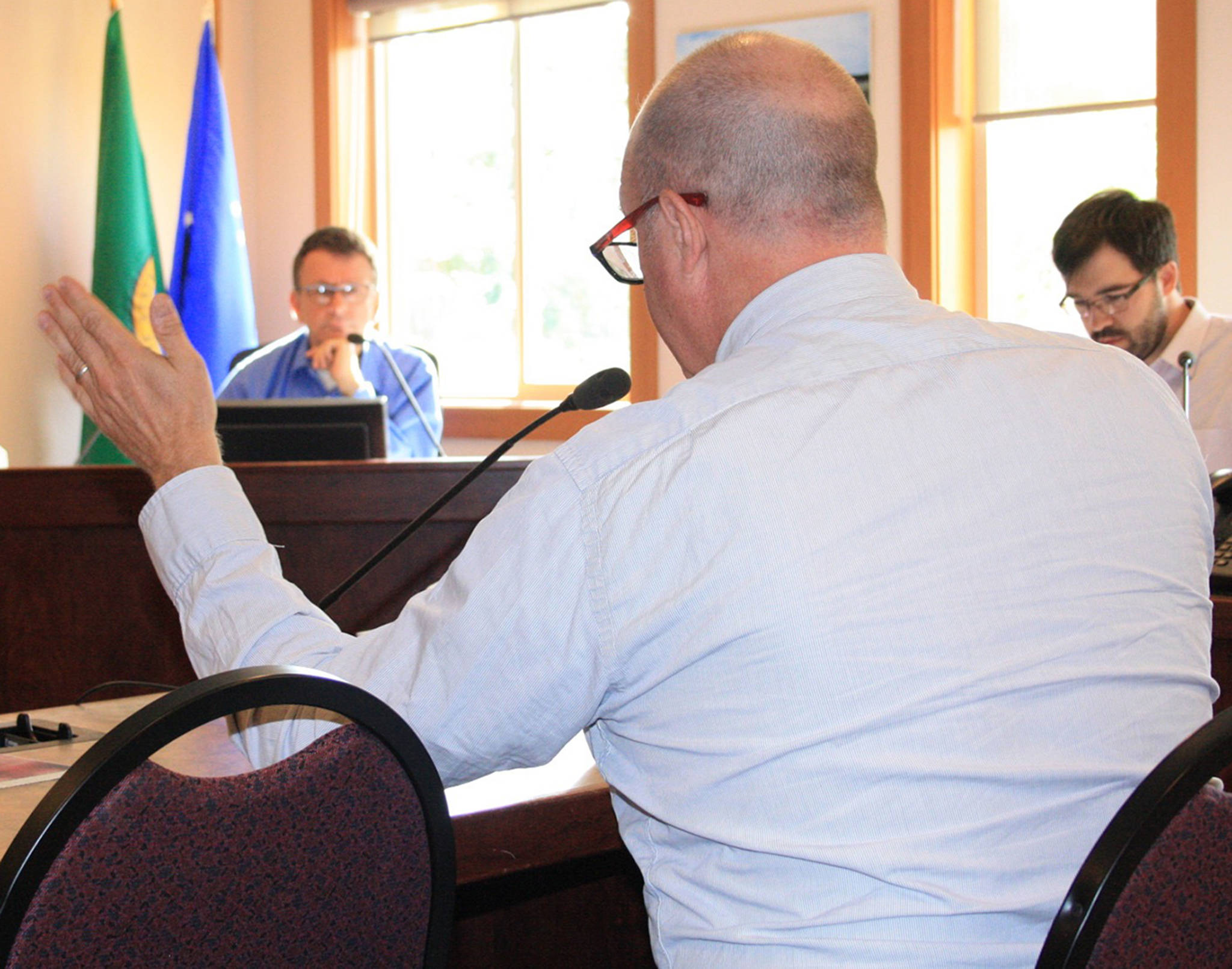For Tom DeMassa of Arizona, choosing the islands for his family’s vacation was easy, thanks to the ferry pass rates.
“Basically the low cost of the ferry had a lot to do with it,” said DeMassa.“We could take our whole family out on the water and go to the islands.”
DeMassa left Friday Harbor the same night as the Washington State Transportation Commission meeting in town. It was the second of four meetings the commission is holding throughout the state to discuss a proposal to raise ferry rates. About four members of the public attended.
The proposal suggests that starting in October, rates for standard-sized vehicles and passengers could increase by about 3 percent, each. The following October, they should increase by about 2 percent, each.
The summer rate for standard-sized vehicles arriving in Friday Harbor from the mainland is $63.75. For an additional adult passenger, it’s $13.25.
According to a fact sheet disseminated at the meeting, Washington State Ferries lost half of its operational funds when the state repealed the Motor Vehicle Excise Tax in 1999. To make up for this loss, fares have increased roughly 100 percent since 2001.
After the meeting, San Juan County Councilman Rick Hughes explained that the county’s ferry profits don’t cover operational expenses. This is known as the farebox recovery rate. San Juan County’s average rate, said Hughes, is about 50 percent.
“We do really well covering our costs in the peak summer time, but in the winter time we don’t cover our farebox recovery,” said Hughes.
At the meeting, Ray Deardorf with the Washington State Ferries explained that the proposal suggests to lower fare for large, commercial-sized vehicles. This could reduce prices of goods arriving to the islands.
“This gets them back in alignment relative where they should be to a standard vehicle fare,” said Deardorf.
Fare for vehicles over 22 feet long has increased at a larger rate than standard-sized vehicles since 2011. The proposal would lower it to the same rate increases as average-sized vehicles, defined as between 22 feet and 14 feet in length.
If the proposal passes:
• Homeschool classes could use the ferries’ school group discount. The discount, however, would be raised from a $2 roundtrip fee to $10.
• Operators of licensed motorized bikes would pay the ferry rate for motorcycles, not bicycles. This is a roughly $20 difference. Cyclists taking up more ferry space by towing trailers would pay the same rate.
• The current practice of banning the resale of multi-ride passes would be included in the Washington Administrative Code. The code would also include the suggestion to bring documentation of vehicle length for those under 14-feet long. Drivers of vehicles under 14-feet in length pay about $10 less than standard-sized vehicles, but proving sizes can sometimes hold up payment lines.
For DeMassa, the rate increase wouldn’t have changed his summer plans to see the Southern resident killer whales, though he missed them on this trip.
“The low cost made it nice and we came to see the whales,” said DeMassa. “We didn’t see any; it’s a low-whale summer.”
Whether it’ll be a low-fare fall will be determined at the final meeting on the proposal on July 26 in Seattle. The deadline for written comments is July 21. Visit wstc.wa.gov for more information.




